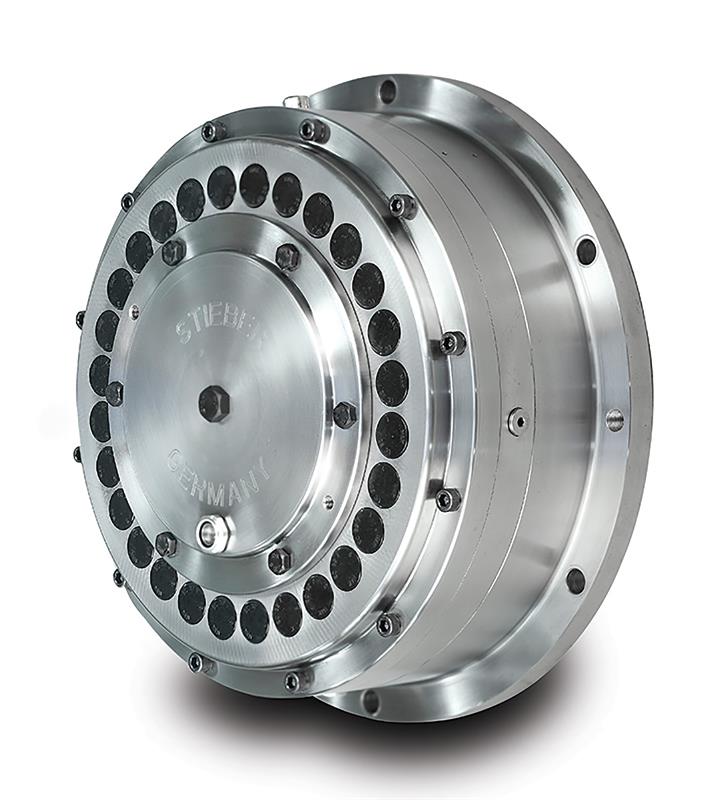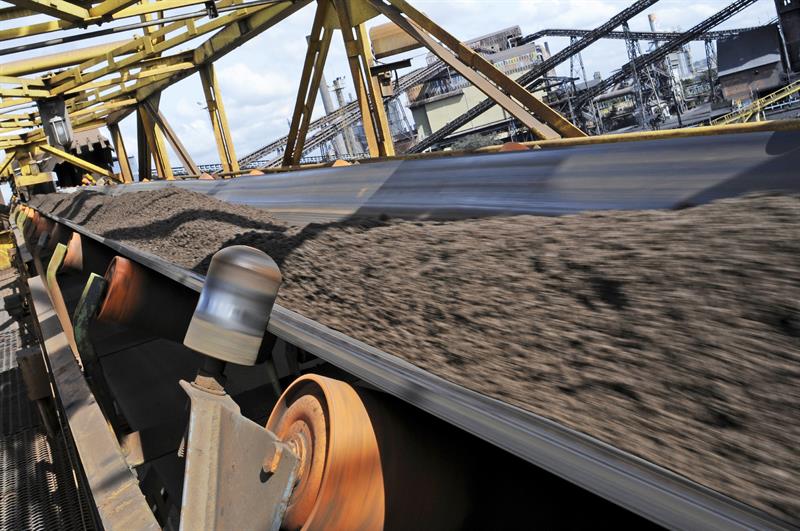“Backstops are a fundamental safety component for preventing an uncontrolled change of direction and speed under the influence of gravity,” explains Dr Torsten Kretschmer, technical director at Stieber Clutch. “A fully-loaded, blocked belt conveyor system can impose huge torques on the drive.
“However, with the right know-how and an in-depth knowledge of the prevailing conditions of use, it is possible to design the backstop in a compact and cost-efficient manner and still safeguard the drive train reliably against overload.”
Dr Kretschmer also points out that backstops merit closer attention from the point of view of technical aspects of occupational safety and health and accident prevention.
Design principles
To design the backstop correctly, plant designers require exact data regarding the torques present on the conveyor line. In cases of doubt, many customers and designers work with a larger safety factor, although it is naturally desirable to avoid over-dimensioning and unnecessary costs.
 Plant operators should therefore give the job of determining the torques occurring to experienced design engineers, who can calculate these accurately. This information helps the overrunning clutch manufacturer in turn, working in tandem with the customer, to coordinate the performance data of the backstop precisely to the torques to be expected.
Plant operators should therefore give the job of determining the torques occurring to experienced design engineers, who can calculate these accurately. This information helps the overrunning clutch manufacturer in turn, working in tandem with the customer, to coordinate the performance data of the backstop precisely to the torques to be expected.
“In the ideal case, the backstop is designed in parallel with the drive unit, because the motor and gearbox play a key role for its dimensioning and performance parameters,” Dr Kretschmer says.
Backstops can either be flanged directly onto the transmission housing on a fast-running transmission shaft or mounted externally on the shaft end of a slow-running transmission shaft. For greater ease of servicing, some users prefer a transmission mounted separately from the conveyor line so it can be dismantled without having to strip down the belt. In this case an external backstop between the conveyor line and the transmission is the best solution.
Load balancing and torque limiting
“The number and configuration of backstops are dependent, for the most part, on the application,” Dr Kretschmer explains. “On conveyors with multiple drives and a corresponding number of backstops without torque limiting, it should be assumed that only low load balancing takes place.”
The reason for this, he says, is the delayed engagement of the various backstops (RS) in consequence of tolerances in the stops, different belt elongations at the stops, and different friction states (efficiency rates) in the belts.
Torque-limiting backstops, which can safely hold the restoring torque (safety factor 1.3), can be specified that are much smaller than a conventional backstop without sustaining damage in the event of an aborted start. Stieber recommends a safety factor of 1.3 on the restoring torque, if permissible.
The efficiency factor
As well as the restoring torque, the design depends substantially on the efficiency factor in the conveyor system and the dynamic slipping torque of the stop that is set.
“Each application naturally makes its own special demands, and the calculations for the design of backstops should always be carefully checked by experts who have experience of these solutions,” Dr Kretschmer points out. “Presupposing the relevant technical expertise, it is possible to specify cost-effective yet safe and reliable solutions.”

Electric motors are not normally designed to start up fully loaded conveyor belts, or they would be over-dimensioned and inefficient in normal operation. The next step following the response of a backstop is therefore the controlled release of the conveyor belt. How long this takes depends to a large extent on the type of backstop installed. Ideally, a backstop that is to be released mechanically or hydraulically permits a controlled release of the belt. In systems with more than one backstop, simultaneous and gradual release by means of a central hydraulic system is particularly efficient and convenient. This allows the conveyor to be run in reverse in a controlled manner and quickly unloaded.
“Hitherto most types of backstops only permitted reverse running, if at all, to a limited extent, and certainly not at high speed,” says Dr Kretschmer. “However, Stieber now offers products that no longer have this drawback. Operators of conveyor systems can hereby reduce stoppage times due to unloading following a drive failure to a minimum.
While conventional backstops have plain bearings, Dr Kretschmer says that type RDBK and RDBR backstops from Stieber have a patented roller bearing assembly, allowing them to run in reverse for a long time and at high speeds.
Operational trials and statutory regulation
The testing of backstops in operation is not currently prescribed, in part due to the cost and production downtime associated with this. On the other hand, backstops have a key safety function and the application of a maintenance and testing programme guaranteeing the reliable functioning of these components in an emergency seems more than justified.
“With its many mining businesses, Australia is a pioneer when it comes to safety standards for large conveying systems,” Dr Kretschmer says. “The Australian machinery safety standard for belt conveyors for bulk materials AS/NZS 4024.3611:2015 describes the requirements for equipment widely used in mining, for example. Section 2.2.3.2 goes into detail about redundant design and component failure.”
In view of the greater attention paid to occupational health and safety, it cannot be ruled out that safety regulations in certain fields or regions are updated to the effect that regular checks of safety mechanisms under operating conditions are required. For example, it could be the case that the operator must cause an emergency stop situation of a fully loaded conveyor to check that the backstops and comparable components are functioning properly.
Even if operators are pleased with a positive test result, they may then face the problem of their blocked conveyor system needing to be unloaded before production can be resumed.
“Anyone who has backstops that permit-controlled reverse running in this situation can perhaps take care of the release process within a few minutes,” Dr Kretschmer says. “In view of the cost of production downtimes, more and more operators are deciding in favour of such components.”

Dr Torsten Kretschmer, technical director at Stieber Clutch










